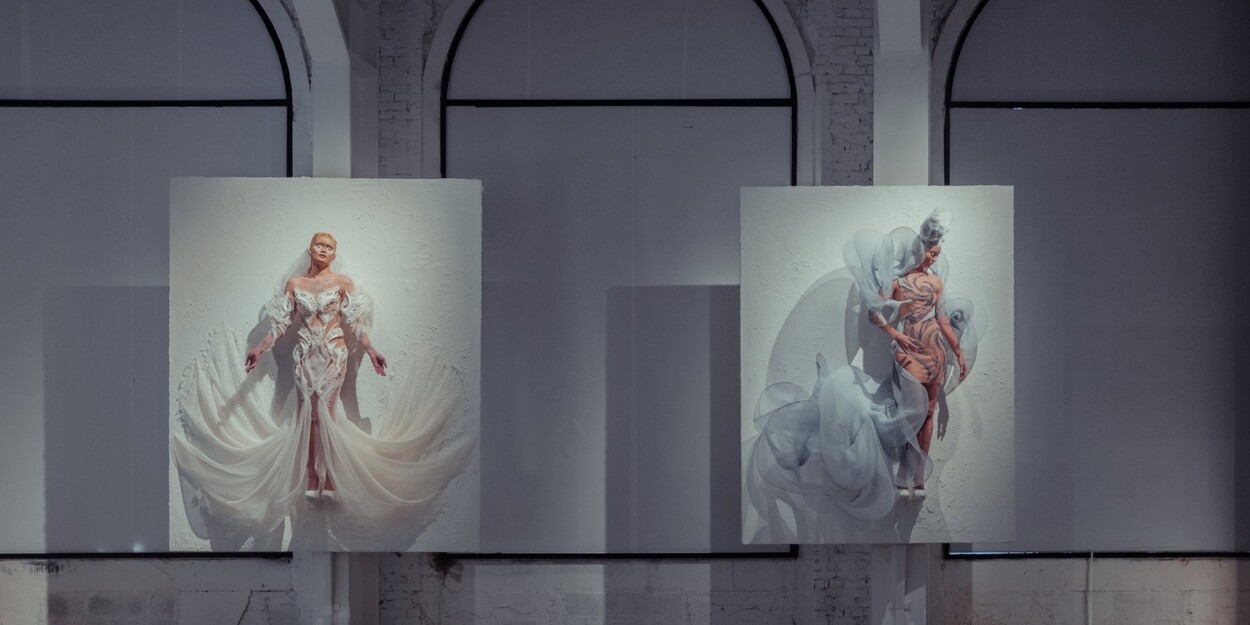In recent years, 3D printing has transcended its industrial roots to become a transformative tool for artists and designers. By offering unprecedented freedom in form, color, and material, additive manufacturing allows creators to push the boundaries of what’s possible—whether they’re crafting intricate sculptures, one-of-a-kind jewelry, or interactive installations. In this article, we’ll explore why 3D printing appeals to artists, survey the materials and technologies available, highlight creative opportunities and challenges, peek at future trends, and show you how to get started with Hi3DP’s platform.
Banner Image Courtesy of Iris Van Herpen
Why 3D Printing Appeals to Artists
Unlimited Complexity & Geometry
Traditional sculpting techniques can struggle with undercuts, internal cavities, or fine lattice structures. 3D printing, by building layer by layer, makes “impossible” geometries routine. Artists can explore biomimetic forms, recursive fractals, and fluid organic shapes that would be infeasible by hand.
Rapid Iteration & Experimentation
Gone are the days of carving away weeks of work only to start over. With digital modeling tools (like Blender, Rhino, or ZBrush) paired with slicing software, artists can tweak their designs and print revised versions in hours. This accelerated feedback loop fuels experimentation and helps refine concepts.
Customization & Personalization
Every print can be unique—scaled up or down, hollowed out to save material, or modified with individual engravings. Whether fulfilling a bespoke commission or producing limited-edition art pieces, 3D printing empowers artists to tailor each work to a client or context without retooling.
Bridging Digital & Physical
Many contemporary creatives begin with generative algorithms, parametric scripts, or virtual reality sculpting. 3D printing is the natural bridge that brings those digital artifacts into the physical world—preserving every nuance of the code-driven aesthetic.
Democratizing Access
Desktop 3D printers now start under $200, and online services like Hi3DP let artists print on professional machines without capital outlay. This democratization means emerging talent can experiment at a low cost and gain exposure with minimal barriers to entry.
Materials & Technologies
Thermoplastics (FDM/FFF)
Overview: Fused Deposition Modeling (FDM) extrudes melted filament—commonly PLA, ABS, or PETG—through a nozzle.
Pros: Cost-effective, large build volumes, durable parts.
Cons: Visible layer lines, limited fine detail.
Art Uses: Bold geometric sculptures, functional art pieces, and large architectural models.
Resins & Photopolymers (SLA/DLP)
Overview: Stereolithography (SLA) and Digital Light Processing (DLP) cure liquid resin with a laser or projector.
Pros: Ultra-high detail, smooth surfaces, translucent and specialty resins.
Cons: Higher material cost, post-print curing and washing required.
Art Uses: Miniature figurines, fine jewelry prototypes, translucent light installations.
Powder-Bed (SLS/MJF)
Overview: Selective Laser Sintering (SLS) and Multi Jet Fusion (MJF) fuse powder particles—nylon, TPU, or composites—into solid parts.
Pros: No support structures needed, complex interlocking assemblies, flexible and strong.
Cons: Rough surface finish (can be smoothed), higher equipment costs.
Art Uses: Intricate lattice sculptures, wearable art, and modular installations.
Multi-Material & Color Systems
Overview: Advanced systems like PolyJet or binder-jetting can combine multiple resins or bind colored powders in a single build.
Pros: Full-color prints, gradient materials, varied hardness in one object.
Cons: Very high cost per part, limited size.
Art Uses: Realistic figurines, color-rich wall art, tactile museum exhibits.
Creative Opportunities & Challenges
|
Opportunity |
Challenge |
Creative Workaround |
|
Organic, biomimetic forms |
Complex support removal for internal cavities |
Design with escape holes and modular snap-fits |
|
Parametric, code-driven design |
Steep learning curve for CAD and scripting |
Start with user-friendly pattern libraries (e.g., Grasshopper) |
|
Small-batch personalization |
Higher per-unit cost versus mass production |
Use hybrid workflows—FDM for structure, SLA for details |
|
Interactive, kinetic sculptures |
Mechanical reliability and clearance tolerances |
Build in adjustable joints and integrate post-print calibration |
|
Wearable art and functional accessories |
Skin-safe materials and flexible durability requirements |
Leverage TPU powders in SLS or flexible filaments |
Materials Cost & Sustainability: Premium resins and powders can cost $50–$200 per kilogram. Artists should plan prints to minimize waste—hollow designs and lattice infill help stretch materials.
Printer Limitations: Build volume caps part size. For large works, consider splitting models into interlocking modules or partnering with an industrial print service.
Post-Processing Overhead: Sanding, painting, and assembly can take as long as printing. Factor in finishing time when setting project timelines.
Future Trends in 3D-Printed Art
Biomaterials & Eco-Friendly Filaments
Innovations like algae-based PLA, mushroom mycelium composites, and recycled polymer blends are growing in availability. These sustainable materials let artists create work that aligns with environmental values.
AI-Driven Generative Design
Machine learning tools can now optimize structures for strength, lightness, or visual complexity. Artists are partnering with AI to co-create forms that surprise and delight—even steering generative algorithms through custom prompts.
Multi-Color Large-Format Printing
New machines are expanding build volumes while adding color heads or binder-jetting capabilities. Imagine murals printed as single continuous panels or outdoor sculptures in fade-resistant pigments.
Haptic & Sensory Integration
Embedding sensors or conductive inks directly during printing opens doors to reactive art—pieces that glow, move, or play sound when touched.
Distributed & Collaborative Fabrication
With cloud-based CAD platforms and decentralized printer networks, artists can collaborate across continents. A model uploaded in Berlin could be printed in São Paulo and finished in Los Angeles, speeding global exhibitions.
Getting Started at Hi3DP
If you’re ready to bring your 3D printed art to life, Hi3DP offers a streamlined, artist-friendly platform:
Supported formats: STL, OBJ, 3MF, STEP.
Instant file validation checks for watertightness and printable geometry.
2. Choose Materials & Finishes
Select from thermoplastics, resins, powders, or full-color options.
Review surface finishes: matte, gloss, dyed, or painted.
3. Get Instant Quotes & Lead Times
Our algorithm calculates cost by volume, complexity, and material.
Compare desktop-grade versus industrial prints side by side.
4. Order & Delivery
Worldwide shipping with tracking.
Optional post-processing services: polishing, painting, assembly.














